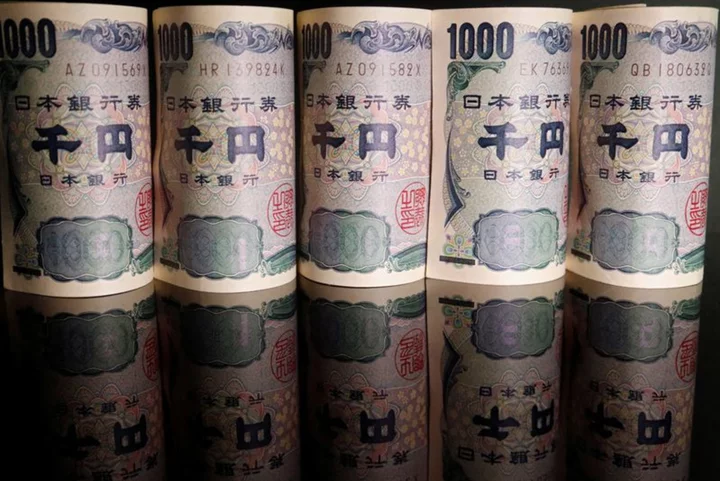By Rae Wee
SINGAPORE The yen weakened past 145 per dollar on Friday, a level which kept speculators wary of potential intervention from Japanese authorities, while a faltering economic recovery in China also kept pressure on the yuan.
The yen bottomed at 145.07 per dollar in early Asia trade, its lowest in over seven months, and was headed for a quarterly loss of more than 8%.
Its renewed decline has stoked speculation that intervention by Japanese authorities could be imminent, particularly as the level of 145 per dollar first prompted them to shore up the yen in September.
"I don't think there's a huge line in the sand, because if the other major currencies of major trading partners also move in tandem, it doesn't make sense for them to intervene," said Saktiandi Supaat, Maybank's regional head of foreign exchange research and strategy.
"But of course, people will see 145 as the historical level."
Data on Friday showed core consumer prices in Tokyo rose 3.2% in June from a year earlier, exceeding the Bank of Japan's 2% target for the 13th consecutive month.
Also on Friday, an official factory survey showed Chinese manufacturing activity contracted for a third consecutive month in June.
The onshore yuan fell to its lowest since November at 7.2615 per dollar shortly after trading opened on Friday.
Chinese authorities this week ramped up efforts to slow yuan depreciation, with the People's Bank of China (PBOC) fixing stronger-than-expected midpoint rates and state banks selling dollars both onshore and offshore.
"Their efforts are to slow the pace of the currency's depreciation ... but in general, in terms of fundamentals, I think the easing policy of the PBOC and the economic environment there doesn't support the (yuan)," said Maybank's Supaat.
The Australian dollar, often used as a liquid proxy for the yuan, slipped 0.12% to $0.6608.
The New Zealand dollar rose 0.02% to $0.6070.
MORE HIKES AHEAD
The U.S. dollar was firmer in early Asia trade and was on track to reverse two quarters of loss against six major peers, drawing support from bets that the U.S. Federal Reserve has further to go in raising interest rates to tame inflation.
The dollar index steadied at around 103.33 and was heading for a gain of about 0.7% in the second quarter.
The number of Americans filing new claims for unemployment benefits unexpectedly fell last week, data on Thursday showed, while the Commerce Department the same day raised its estimate of first-quarter gross domestic product.
"The two economic data releases came in above market expectations and certainly reinforced the narrative of a resilient U.S. economy," said currency strategist Carol Kong at Commonwealth Bank of Australia.
Sterling was last 0.06% higher at $1.2619 and was headed for a 1.4% monthly gain, as traders similarly price in more rate hikes from the Bank of England as Britain's inflation rate continues to run high.
The euro edged 0.11% higher to $1.0874 and was set to gain roughly 1.7% for the month against the backdrop of a still-hawkish European Central Bank.
"Even though there is still some tightening in the pipeline ... there will be an increasing emphasis on the time dimension of monetary policy," said Elwin de Groot, head of macro strategy at Rabobank.
"The bottom line is that in the U.S., the euro zone and the UK, policy hasn't been restrictive enough for long enough to see a real impact on core inflation."
(Reporting by Rae Wee)

